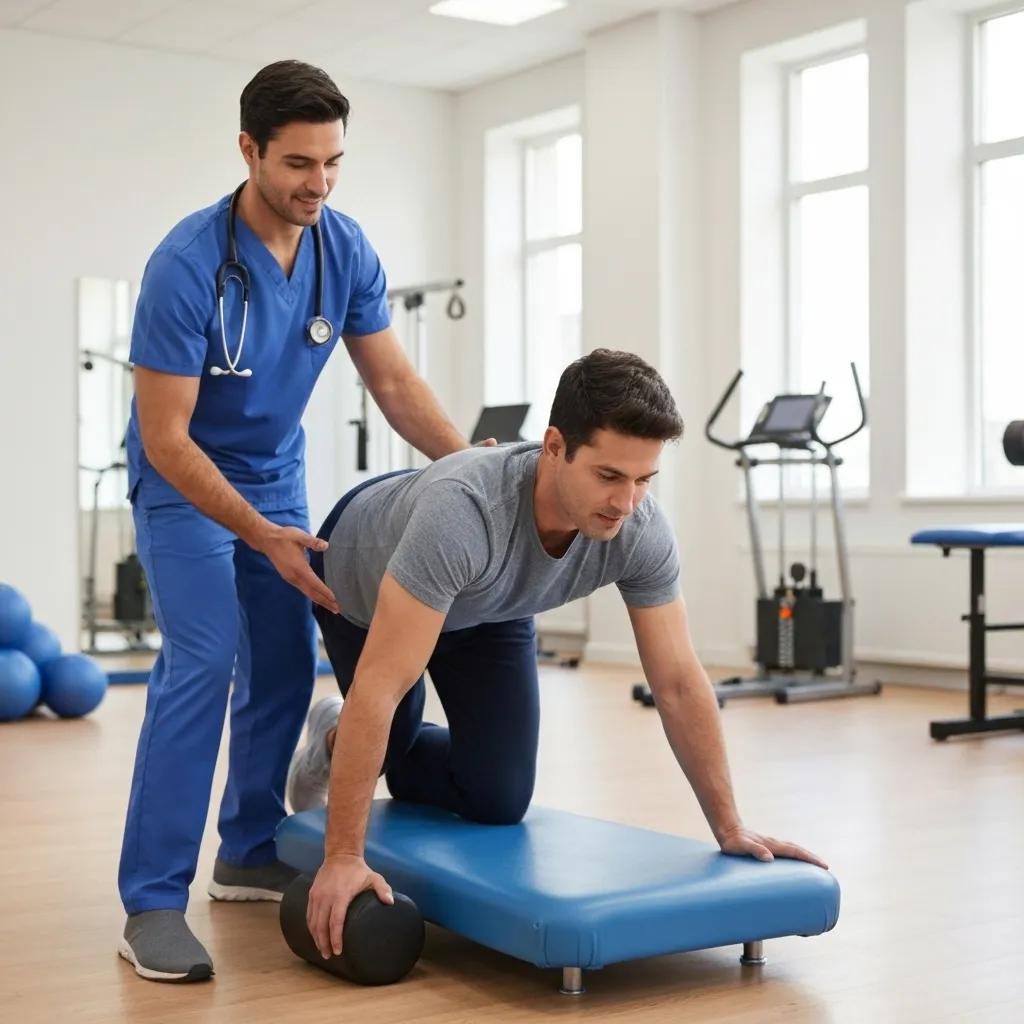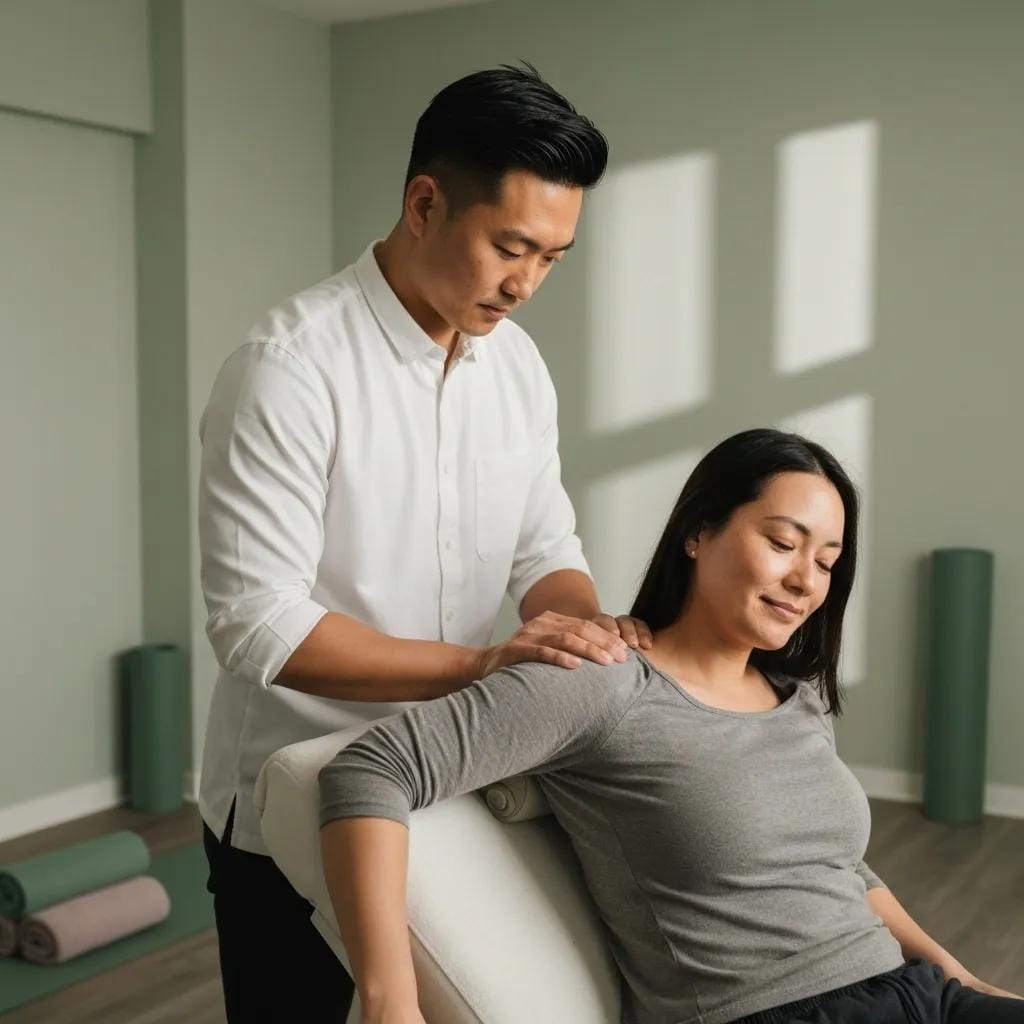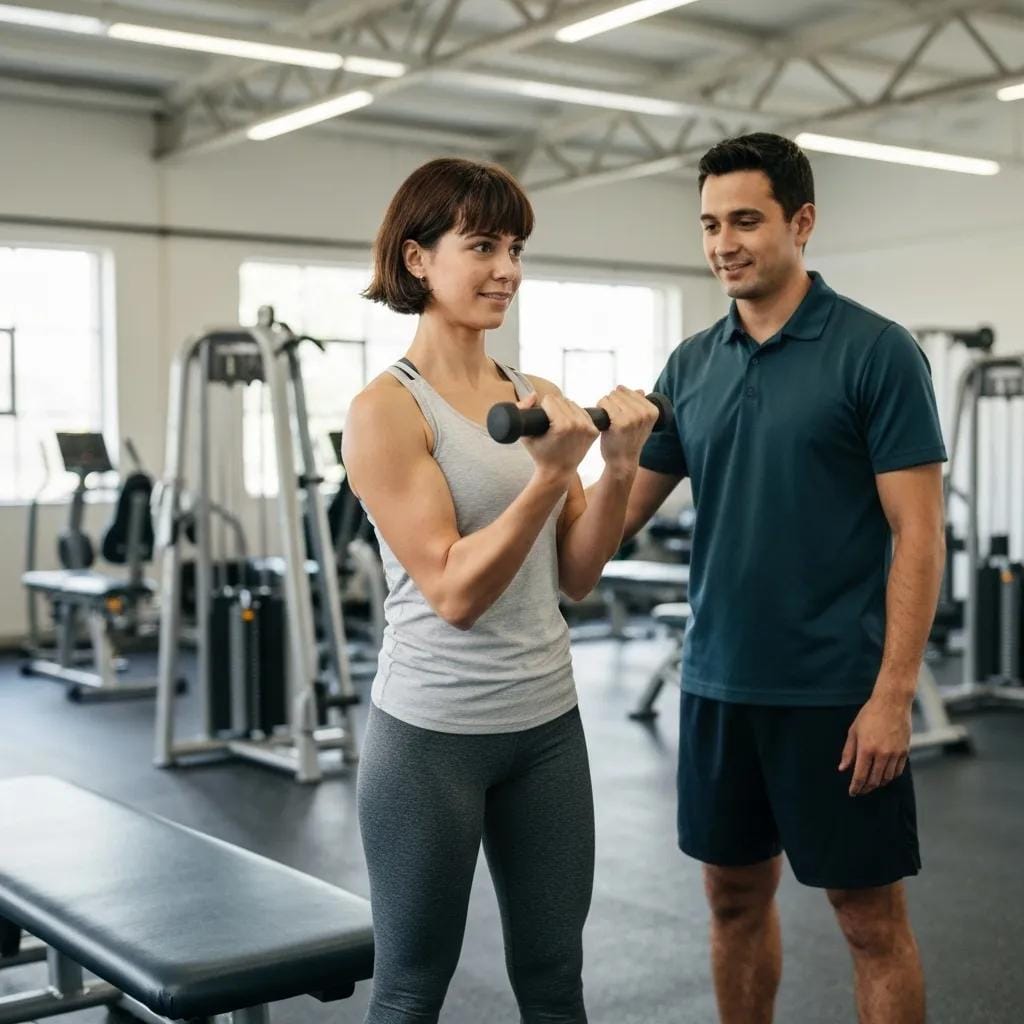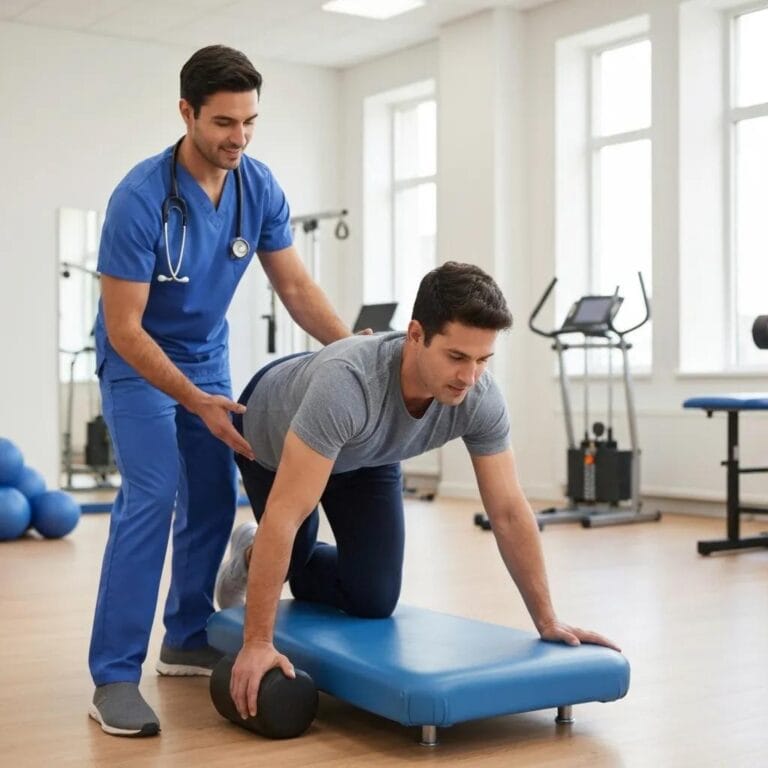
Active vs. Passive Physical Therapy: Which Is Better for Effective Injury Recovery and Rehabilitation?
When facing an injury, understanding whether to engage actively in your recovery or rely on therapist-administered treatments can determine how quickly you regain function and reduce pain. This comprehensive guide to comparing active vs. passive physical therapy delivers clear definitions, mechanisms, and benefits of each approach. You will learn how active rehabilitation exercises and passive modalities complement one another, the ideal timing for each method, and how RHW Indy’s personalized plans integrate both to maximize healing. We’ll also explore condition-specific recommendations, real-world exercise examples, and long-term outcomes—all aimed at empowering you to choose the right path for sustainable recovery.
What Is the Difference Between Active and Passive Physical Therapy?
Active physical therapy requires patient participation through movement and exercise to rebuild strength, flexibility, and endurance. Passive physical therapy involves therapist-administered treatments—such as manual mobilization or modalities—to reduce pain and inflammation without active patient effort. Active Physical Therapy promotes Patient Self-Efficacy by engaging neuromuscular pathways, while Passive Physical Therapy provides Immediate Pain Relief to prepare the body for active rehabilitation.
Below is a comparison of core attributes for each approach:
| Therapy Type | Patient Role | Example Technique |
|---|---|---|
| Active Physical Therapy | Performs exercises and functional tasks | Therapeutic resistance training |
| Passive Physical Therapy | Receives therapist-administered care | Manual joint mobilization |
Active interventions foster long-term functional gains, while passive treatments jump-start pain relief and prepare tissues for movement. Understanding these differences sets the stage for exploring how both methods work hand-in-hand.
How Does Active Physical Therapy Involve Patient Participation?
Active physical therapy engages patients directly in their recovery by requiring them to perform strengthening, stretching, and functional tasks.
- Patients execute targeted exercises to stimulate muscle fibers and neural pathways.
- Functional training simulates daily activities to restore movement patterns.
- Progress-based loading encourages continuous adaptation and gains.
By participating in active rehabilitation, patients build confidence and self-management skills that accelerate return to daily life and sports.
What Are Common Passive Physical Therapy Techniques and Modalities?

Passive modalities encompass hands-on and device-based physical therapy treatments that a therapist applies while the patient remains relaxed.
- Manual Therapy: Therapist-guided joint mobilizations reduce stiffness.
- Heat and Cold Therapy: Temperature modulation controls inflammation and promotes circulation.
- Electrical Stimulation: TENS units desensitize pain receptors and support tissue healing.
Through passive interventions, tissue recovery accelerates safely, easing pain so that patients can progress into active exercises more comfortably.
Effectiveness of physical therapy and exercise on pain and functional status in patients with chronic low back pain: a randomized-controlled trial
This randomized-controlled trial investigated the impact of various physical therapy modalities, such as cold application, hot packs, ultrasound, and TENS, on chronic low back pain. The findings suggest that these passive modalities can provide short-term pain relief and improve functional status, especially when combined with exercise and medical treatment, with improvements sustained for up to one year.
This study supports the article’s discussion on passive techniques providing immediate pain relief and inflammation reduction, and their use in preparing patients for active rehabilitation, particularly for conditions like chronic low back pain.
How Do Active and Passive Therapies Complement Each Other?
Combining active and passive therapies leverages the immediate relief of passive modalities with the lasting strength and mobility gains of active exercises. Manual Therapy reduces muscle spasms, which prepares the neuromuscular system for Therapeutic Exercises that improve muscle strength and joint control. This synergy enhances overall rehabilitation outcomes and supports a phased progression from acute care to independent functional training.
The Influence of Active, Passive, and Manual Therapy Interventions on Escalation of Health Care Events After Physical Therapist Care in Veterans With Low Back Pain
This retrospective cohort study found that while nearly all veterans with low back pain received active interventions, the use of manual therapy alongside active interventions was associated with reduced opioid prescriptions. Conversely, the use of two or more passive interventions in conjunction with active treatments was linked to an increased escalation of care events.
This research supports the article’s point that combining active and passive therapies can be beneficial, specifically highlighting the positive role of manual therapy with active interventions, while also cautioning against over-reliance on multiple passive modalities.
What Are the Key Benefits of Active Physical Therapy for Recovery?

Active therapy improves physical function by engaging the patient in purposeful movement, which enhances blood flow, neuromuscular coordination, and psychological resilience. It promotes the remodeling of connective tissues and prevents muscle atrophy. By addressing strength, flexibility, and balance directly, active rehabilitation delivers sustainable improvements that outlast passive relief alone.
How Does Active Therapy Improve Strength, Mobility, and Endurance?
Active physical therapy boosts muscle strength through progressive resistance exercises, increases joint range of motion via guided stretching, and enhances cardiovascular endurance by incorporating aerobic components.
| Outcome | Mechanism | Benefit |
|---|---|---|
| Strength | Progressive overload of muscle fibers | Greater force production for daily tasks |
| Mobility | Repeated end-range stretching | Improved joint flexibility and gait |
| Endurance | Aerobic conditioning and interval training | Sustained activity tolerance |
By improving these core attributes, active rehabilitation reduces compensation patterns and accelerates return to functional independence.
Why Is Active Therapy Essential for Long-Term Rehabilitation?
Active Physical Therapy reduces the risk of re-injury by strengthening supporting musculature and re-educating movement patterns. It fosters adaptive tissue remodeling, which ensures joints and muscles can withstand future stresses. This approach promotes resilience and empowers patients to maintain gains through ongoing exercise and self-management.
What Role Does Patient Empowerment Play in Active Therapy Success?
Patient education on movement mechanics, self-monitoring techniques, and home exercise programs builds autonomy.
- Learning proper biomechanics prevents harmful compensations.
- Understanding symptom management boosts adherence to exercises.
- Self-paced progress tracking reinforces motivation and confidence.
When patients take ownership of their rehabilitation, outcomes improve and long-term self-efficacy becomes sustainable.
When Should You Choose Passive Physical Therapy?
Passive Physical Therapy provides immediate comfort and inflammation control, making it ideal during acute phases of injury when active movement may exacerbate pain or delay healing. It quickly restores circulation, reduces swelling, and addresses muscle guarding, creating a safer environment for subsequent active rehabilitation.
What Conditions and Injuries Benefit Most from Passive Modalities?
Passive treatments are most valuable for:
- Acute sprains and strains with significant inflammation
- Post-operative pain and swelling following orthopedic surgery
- Severe muscle spasms that limit safe movement
By addressing acute symptoms, passive care supports a smoother transition to active recovery phases.
How Do Passive Techniques Provide Immediate Pain Relief and Inflammation Reduction?
Manual Therapy reduces nociceptive input by gently mobilizing joints and soft tissues, while ice and heat applications modulate inflammatory mediators and blood flow. This mechanism alleviates discomfort and prepares neural pathways for re-engagement in active exercises without the risks of pain-induced movement avoidance.
When Is Passive Therapy Used to Prepare Patients for Active Rehabilitation?
Passive modalities are integrated early post-injury or post-surgery to control pain and swelling. Once inflammation subsides, therapists progressively introduce active stretching and strengthening to rebuild function safely. This phased approach ensures tissues adapt optimally to mechanical loads.
How Does RHW Indy Personalize Physical Therapy Plans Combining Active and Passive Approaches?
RHW Indy offers Personalized Treatment Plans that blend therapist-administered modalities with patient-driven exercises. By conducting a thorough assessment of injury history, movement patterns, and individual goals, RHW Indy therapists design phased protocols that transition seamlessly from pain management to active rehabilitation exercises.
What Is the Process for Developing Customized Treatment Plans at RHW Indy?
RHW Indy’s plan development includes:
- Initial Evaluation to identify impairments and functional limitations.
- Goal Setting in collaboration with the patient to align expectations.
- Modality Selection combining passive relief techniques and active exercises.
- Progress Monitoring with regular re-assessments to adjust intensity.
This structured process ensures each patient’s rehabilitation is responsive, measurable, and patient-centered.
How Are Active and Passive Therapies Integrated for Optimal Results?
Therapists at RHW Indy sequence passive modalities—such as ice or manual mobilization—to reduce acute symptoms, followed by active exercise blocks that rebuild strength and coordination. This integration maximizes tissue readiness, promotes neuromuscular adaptation, and accelerates functional recovery.
What Is the Patient’s Role in Their Rehabilitation Journey at RHW Indy?
Patients engage in: physical therapy
- Home Exercise Programs tailored to reinforce in-clinic progress
- Symptom Feedback to guide therapy intensity and modalities
- Self-management Strategies for pain control and injury prevention
Active collaboration between therapist guidance and patient participation reinforces long-term outcomes and self-efficacy.
How Do Active and Passive Physical Therapy Approaches Differ for Specific Conditions?
Therapy choices vary by condition severity, tissue healing stage, and patient characteristics. Active methods rebuild function, while passive techniques control acute symptoms. Below we explore condition-specific recommendations.
What Is the Best Approach for Back Pain: Active or Passive Therapy?
Chronic low back pain responds best to active interventions—such as core stabilization and aerobic conditioning—that address motor control deficits. Passive methods like heat or gentle mobilization provide short-term relief, but active Physical Therapy promotes lasting spinal support and reduces recurrence rates.
The Influence of an Active Treatment Approach in Patients With Low Back Pain: A Systematic Review
This systematic review highlights that an active treatment approach, particularly for low back pain, is associated with improved patient outcomes, including reduced pain and disability. It emphasizes the importance of patient adherence to active interventions for long-term benefits and suggests that physical therapists are more likely to limit therapy sessions for patients in active intervention groups.
This research directly supports the article’s claims about active physical therapy fostering long-term functional gains and being essential for conditions like chronic low back pain, as well as promoting patient self-efficacy.
How Are Active and Passive Therapies Used in Pediatric Physical Therapy?
In children, play-based active exercises develop strength, coordination, and motor milestones. Passive interventions—such as soft-tissue mobilization or pediatric ultrasound—alleviate discomfort and prepare young patients for more engaging movement tasks that support growth and function.
What Are Effective Rehabilitation Strategies for Sports Injuries?
Sports rehabs demand progressive loading: passive cryotherapy and manual techniques control acute pain, then dynamic plyometrics and sport-specific drills reintroduce agility and power. This combined approach ensures athletes regain performance safely and confidently.
How Is Post-Surgical Recovery Managed with Active and Passive PT?
Early post-operative care relies on passive modalities—like compression, cryotherapy, and gentle mobilizations—to protect tissues. As healing advances, guided active exercises restore range of motion, strength, and functional capacity, following evidence-based protocols tailored to surgical procedures.
What Are Examples of Active Exercises and Passive Modalities Used in Physical Therapy?
Below are practical illustrations of common interventions you may experience in a rehabilitation plan.
Which Therapeutic Exercises Are Common in Active Physical Therapy?
- Resisted Band Squats to strengthen lower extremities
- Bridging and Core Stabilization for pelvic control
- Dynamic Balance Drills on unstable surfaces
These exercises address strength, stability, and proprioception to restore functional movement.
What Manual and Modalities Are Included in Passive Physical Therapy?
- Manual Joint Mobilizations to increase range of motion
- Ultrasound Therapy to accelerate tissue healing
- Transcutaneous Electrical Nerve Stimulation (TENS) for analgesia
These modalities reduce pain and encourage tissue recovery, making active exercises more effective.
How Can Patients Safely Perform Active Exercises at Home?
A structured home program includes clear instructions, frequency guidelines, and progression criteria.
- Start with low-load movements that emphasize correct form.
- Increase repetitions or resistance gradually as tolerated.
- Use self-monitoring tools—such as pain scales—to pace progression.
Empowering patients with safe home routines extends gains made during in-clinic sessions and reinforces self-management skills.
What Are the Long-Term Outcomes and Effectiveness of Active vs. Passive Physical Therapy?
Active Physical Therapy leads to sustained improvements in strength, flexibility, and movement quality, which reduces re-injury risk. Passive modalities offer valuable short-term relief but lack the capacity to remodel tissues and re-train motor patterns long term. Combining both enhances overall rehabilitation success.
How Does Active Therapy Reduce the Risk of Future Injuries?
Active Physical Therapy reduces injury recurrence by stimulating neural adaptations and strengthening supporting musculature. By retraining movement patterns, it improves joint alignment and load distribution, creating resilient tissues that better withstand daily stresses.
What Are the Limitations of Passive Therapy for Sustained Recovery?
Passive modalities primarily address symptoms and do not foster muscular adaptation or motor learning. Reliance on passive care without subsequent active engagement can lead to persistent weakness, stiffness, and increased risk of chronic dysfunction.
Can Combining Both Therapies Enhance Rehabilitation Success?
Yes, integrating passive relief with active rehabilitation accelerates pain control while building lasting strength and mobility. Patient stories from RHW Indy illustrate how this blended approach resulted in faster return to work and sport, improved quality of life, and greater confidence in independent exercise.
Active and passive methods each offer distinct advantages, and when orchestrated within a personalized plan, they deliver optimal injury recovery and long-term rehabilitation results. If you’re ready to experience a tailored approach that empowers your healing journey, reach out to RHW Indy today and schedule your comprehensive assessment.
Frequently Asked Questions
What are the potential risks of relying solely on passive physical therapy?
Relying solely on passive physical therapy can lead to several risks, including muscle atrophy, decreased functional mobility, and a higher likelihood of re-injury. While passive modalities provide immediate pain relief, they do not promote the necessary muscle strengthening or motor learning required for long-term recovery. This can result in a cycle of dependency on passive treatments without addressing the underlying issues, ultimately hindering the rehabilitation process and prolonging recovery times.
How can patients track their progress in active physical therapy?
Patients can track their progress in active physical therapy by maintaining a rehabilitation journal that records exercises performed, repetitions, and any pain levels experienced. Additionally, setting specific, measurable goals—such as increasing weight in resistance training or improving flexibility—can help gauge improvements. Regular check-ins with a therapist for reassessment and feedback also provide valuable insights into progress and necessary adjustments to the treatment plan.
Are there specific populations that benefit more from active physical therapy?
Yes, specific populations such as athletes, individuals recovering from surgery, and those with chronic conditions like arthritis often benefit significantly from active physical therapy. Athletes require strength and agility training to return to their sport, while post-surgical patients need to rebuild strength and mobility. Additionally, individuals with chronic conditions can improve their overall function and quality of life through tailored active physical therapy programs that address their unique needs.
What role does patient education play in the success of physical therapy?
Patient education is crucial for the success of physical therapy as it empowers individuals to understand their conditions, treatment options, and the importance of adherence to prescribed exercises. Educated patients are more likely to engage actively in their rehabilitation, follow home exercise programs, and manage their symptoms effectively. This knowledge fosters a sense of ownership over their recovery, leading to better outcomes and increased motivation to maintain long-term health.
How can passive physical therapy be effectively integrated into an active rehabilitation plan?
Passive physical therapy can be effectively integrated into an active rehabilitation plan by using it as a preparatory phase to alleviate pain and inflammation before introducing active exercises. For instance, manual therapy or modalities like heat and ice can be employed initially to create a conducive environment for movement. Once the patient is comfortable, active exercises can be introduced progressively, ensuring a smooth transition that maximizes recovery and minimizes discomfort.
What should patients expect during their first physical therapy session?
During the first physical therapy session, patients can expect a comprehensive evaluation that includes a review of their medical history, an assessment of their physical condition, and a discussion of their goals. The therapist will likely perform various tests to evaluate strength, flexibility, and range of motion. Based on this assessment, a personalized treatment plan will be developed, outlining both active and passive interventions tailored to the patient’s specific needs and recovery objectives.
How can patients maintain their progress after completing physical therapy?
To maintain progress after completing physical therapy, patients should continue with a home exercise program that reinforces the skills and strength gained during therapy. Regular physical activity, such as walking, swimming, or engaging in sports, can help sustain fitness levels. Additionally, patients should schedule periodic check-ins with their therapist to reassess their condition and make necessary adjustments to their exercise routines, ensuring ongoing improvement and injury prevention.

